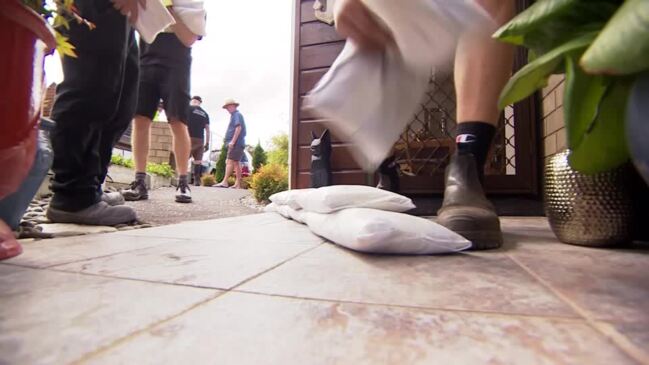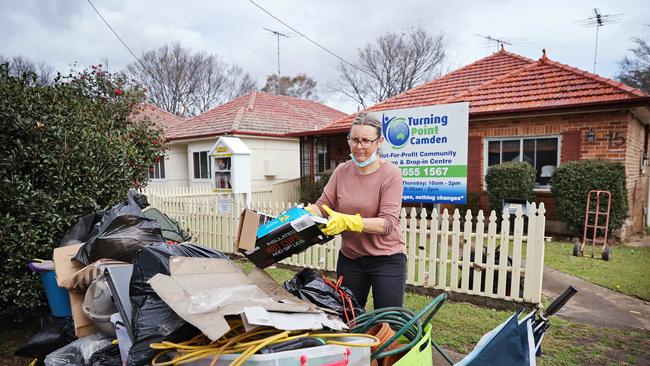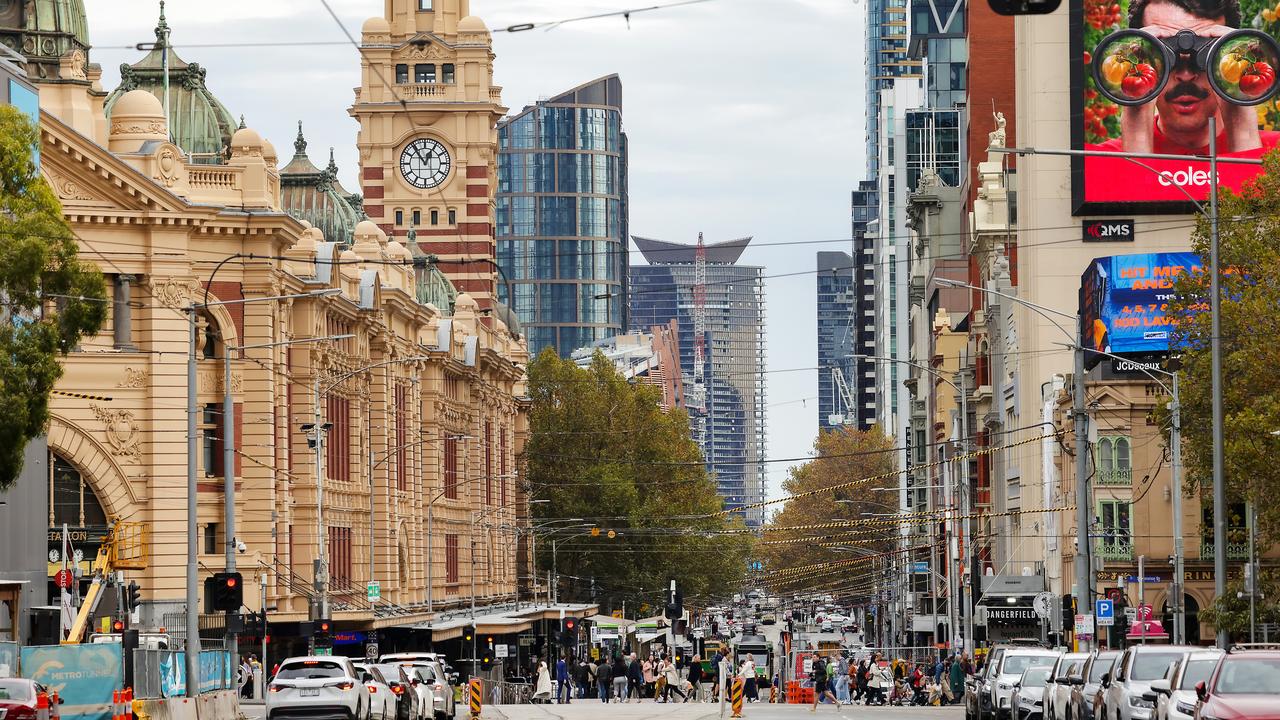Cyclone Gabrielle to test Insurance Australia Group’s budgets amid 10pc premium hikes
The insurance group will raise premiums by around 10 per cent after slashing its annual insurance margin forecast.

Business
Don't miss out on the headlines from Business. Followed categories will be added to My News.
The looming landfall of Cyclone Gabrielle is set to test Insurance Australia Group’s natural catastrophe budgets, after a $70m blowout pinched shareholder returns and shaved margins.
The massive weather system is tracking across New Zealand’s North Island, just weeks after rain lashed the country’s biggest city, Auckland, triggering a $236m worsening of IAG’s costs and threatening annual profit.
IAG on Monday reported that net profit more than doubled to $468m for the six months to December 31 from $173m a year earlier. However, this was only after the insurer unwound $252m in pandemic provisions banked by IAG to cover potential Covid-19 related claims in 2020.
Underlying insurance margins fell to 10.7 per cent over the six-month period from 15.1 per cent a year earlier and well short of IAG’s goals.
IAG chief executive Nick Hawkins said IAG had faced a storm of costs in the past six months as supply chain bottlenecks, labour and parts price rises all hit, alongside massive weather events, but the group was in “good shape”.
“What’s encouraging is the high customer retention rates we continue to hold across our brands, reflecting the trust and value our customers place in our products and services,” he said.
Wild weather which lashed Australia has proven a persistent cost driver for IAG, which exceeded budgets in 2022 and 2021 as floods pounded the East Coast.
IAG’s natural catastrophe budget was already running $70m ahead of expected levels in the first half before storms hit Auckland in late January.
These storms are now expected to see IAG shell out a further $236m to cover losses, but all eyes are on Cyclone Gabrielle, which was making landfall on Monday.
“I don’t know how this event is going to go down in Auckland,” Mr Hawkins said.
IAG faces a maximum $192m cost for its next big weather event, but this will be dialled back in New Zealand to just $108m thanks to an additional drop-down cover purchased by the insurer.
The insurer was also forced to book a further $48m in reserves for prior period claims, in its first half results, as inflation worsened the cost of covering older contracts.

IAG has been increasing premiums across its book in a bid to recoup the costs from the rising tide of inflation.
Gross written premium, the measure used to measure IAG’s total insurance business, was up 7.5 per cent in the first half to $7.1bn.
This was the fastest growth in gross written premium at IAG in seven years and up on the $6.6bn reported in the first half last year.
IAG is hoping the continued premium rises will keep its insurance margin around 10 per cent, compared to prior guidance of 14-16 per cent.
Mr Hawkins said the IAG was looking at pricing every six weeks, but inflation was outpacing these movements.
“We’re acting on it, and we’re taking significant action,” he said.
Inflation drove costs at IAG, across its motor and home business, as the cost of repairs and replacements exploded.
This looks set to continue, with IAG flagging plans for gross written premium growth of “around 10 per cent” in the second half of the year in a bid to claw back its margin.
Barrenjoey analyst Ben Brayshaw said IAG’s loss ratios were below market peers and plans to boost margins “seems unclear”.
IAG’s reinsurance program, which sees global insurance giants step in to cover losses in excess of a purchased limit, has helped the insurer dodge an even worse situation.
The group renewed its catastrophe reinsurance program with some quota share partners, who pick up the tab for costs in exchange for a slice of the insurer’s premiums.
This saw IAG’s maximum exposure from its first weather catastrophe jump from $135m in 2022 to $236m.
IAG chief financial officer Michelle McPherson said IAG faced a “challenging 1 July” renewal for its aggregate reinsurance program.
Barrenjoey’s head of insurance Andrew Adams said IAG’s flagged premium rate increases and signs inflation was improving would be good for insurers.
“The differences in the first and second half result, particularly a lower discount rate and reinsurance spend, should provide assistance to IAG into the second half,” he said.
“However, we still see substantial risk in the sector due to reinsurance issues, particularly if we continue to see a higher than usual number of weather events.”
IAG declared a 6c interim dividend, franked at 30 per cent, but below market expectations. However, it is a slight improvement on last year’s 6c dividend, which was unfranked.
The insurer also suspended its dividend reinvestment plan, amid a broader $350m share buyback scheme announced in December.
IAG shares closed 4.5 per cent higher at $4.92 in a weak market.
Originally published as Cyclone Gabrielle to test Insurance Australia Group’s budgets amid 10pc premium hikes





